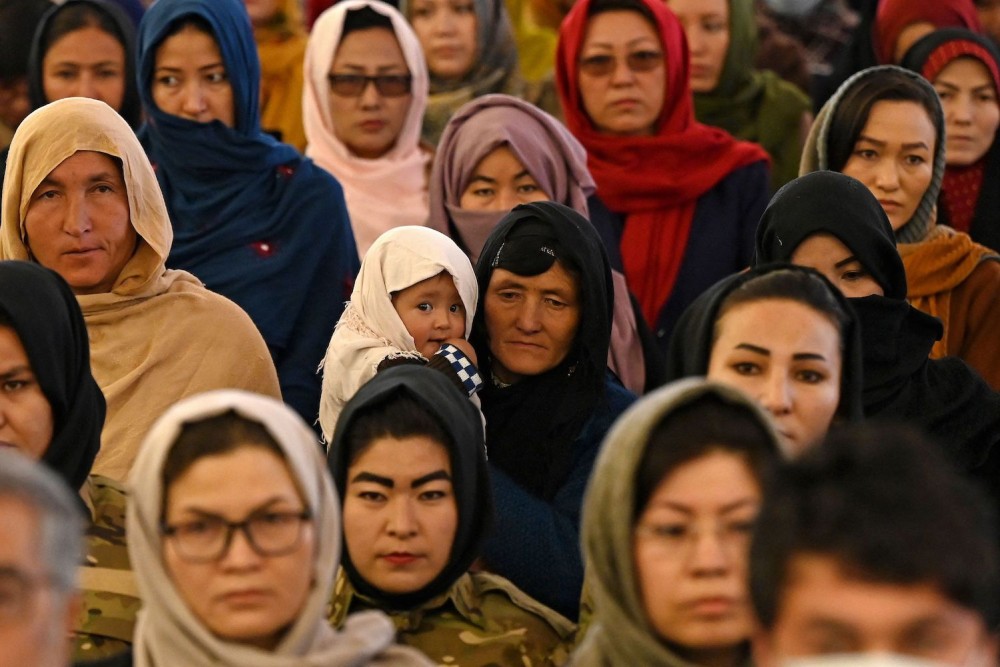On the 30th of August, the Taliban killed 14 men of the Hazara community in Khadir district of Afghanistan’s Daikundi province (Pic 1). Only a month back Taliban tortured and killed nine other Hazara men in the province of Ghazni (Pic 1). Since the political upheaval, the Taliban has been on a killing spree, targeting the ethnic minority groups in deliberated attacks across the region. Amnesty International’s Secretary General Agnès Callamard lamented on the event and said that “The cold-blooded brutality of these killings is a reminder of the Taliban’s past record, and a horrifying indicator of what Taliban rule may bring. Ethnic and religious minorities are at grave risks, along with human rights defenders, journalists, professionals.”
 Pic 1: Daikundi Province. Source: European Asylum Support Office
Pic 1: Daikundi Province. Source: European Asylum Support Office
In May 2021, ISIS-K (Islamic State Khorasan) also targeted the Hazara Shia minority, such as the school bombing in Kabul that killed 68 people. Al-Qaeda and affiliated groups as well have attacked Hazaras on multiple occasions, such as the suicide bombing attack that killed 58 Hazaras in neighboring Pakistan. Hazaras are on every extremist group’s target list since they follow the Shiite school of thought, declared as heresy by the Sunni extremist groups.
Who are Hazaras?
The Hazara community constitutes of roundabout 10% to 20% of the total population of Afghanistan. Presently Hazaras are the third largest ethnic minority, with most following the Shiite school of Islamic ideology. For three consecutive centuries, Hazaras have witnessed a wave of ethnic violence targeted against them. In the 19th century, the Hazara community was the biggest ethnic population of Afghanistan (67%). This was seen as a threat by the then Pashtun Sunni leader Amir Abdur Rahman Khan, who ordered Jihad against Hazaras, which resulted in the massacre of half of the Hazara population. Many since then have either remained under political persecution or have been exiled to Iran and Pakistan. By the end of the 20th century, the Taliban took over from receding Soviet forces in Afghanistan. They acted brutally towards the Hazaras by passing fatwas, declaring them as apostates of Islam, and as a result, several Hazaras got massacred. Within a month of the ascendance of Taliban 2.0, Hazaras got targeted on multiple occasions. The Hazaras are of a non-Pashtun minority, following Shiite ideology and carrying Central-Asian racial features (Pic 2), making them an easy target for the Taliban that constitutes Sunni Majoritarian-Pashtuns.
 Pic 2: Hazara women attending International Women’s Day in Bamiyan. Source: Foreign Policy via Wakil Kohsar/AFP via Getty Images
Pic 2: Hazara women attending International Women’s Day in Bamiyan. Source: Foreign Policy via Wakil Kohsar/AFP via Getty Images
Taliban Uprising: What it means for Hazaras now?
Although the Taliban has called for an inclusive form of government formation, it has failed to induct even one leader of any minority faction into the newly formed Taliban-led Afghan government. The top brass consists of several hardliners who have openly called for the utmost implementation of Sharia laws. Taliban seems to have indicated that it would not make any comprises to Sharia system, where women and “apostates” do not get any form of political representation. This participatory barricade will only add to its political turmoil and will leave the Hazara community isolated from the functioning and implementation of the national policies. Any form of resistance will be met with violent repercussions. Taliban has already threatened and abused media workers who covered the women’s protest in Kabul. Taliban clearly practices zero-tolerance towards any forms of political criticism.
Hazaras are now at the behest of the mercy of the Taliban. By taking over the media sources of the country, it seems to be working out a China-like model of political repression. Anyone who opposes the Taliban’s ideological structure would be threatened or killed. With the lack of media coverage, and a shortage of political checks and balances, it is going to be a free run for the Taliban. Hazaras, who have continued to suffer for long in the nation, will now be dreading for any hope of survival.
Conclusion
Taliban 2.0 has learned its lessons well from its previous debacles. It surely knows a game or two of how to please the west by passing political rhetoric. By promising an inclusive future, the Taliban will surely wade off any western criticism. At the same time, it will look to mend its ties with Iran, which is the political powerhouse for Shia Muslims. Hazaras are just the pawns of the Taliban’s political ploy. An extremist Sunni organization will never accept the Shia community to be of equivalent status. Hazaras will continue to face social repression and political killings. Many will continue to flee to refugee camps in Iran and Pakistan. The habitual discordance of humanitarian standards by the Taliban calls for international attention. Systematic violence and political repression by the Taliban may result in civil violence and mass killings. International agencies and political powerhouses like America, Europe, UK, Saudi, Iran must keep tabs on the Taliban and negotiate for better treatment and participation of the Hazara people.

